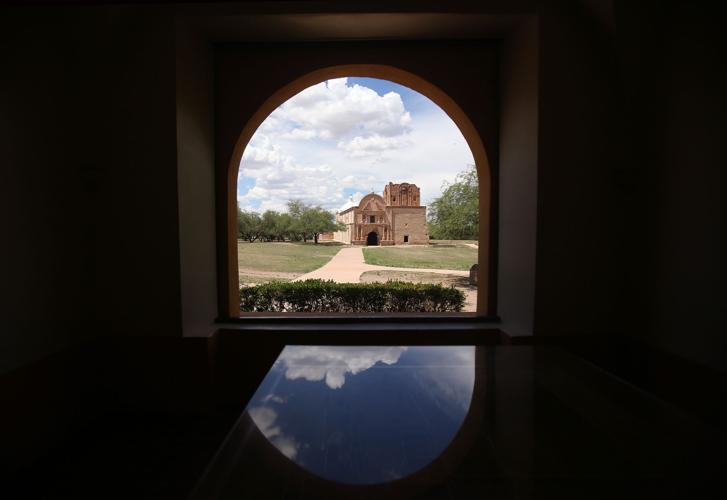TUMACÁCORI MISSION — It’s made out of mud and hasn’t been an active church since 1848, but this magnificent mission 45 miles south of Tucson endures as a shrine of peaceful contemplation and cultural celebration.
Founded by Jesuit missionary Eusebio Francisco Kino in 1691 and drawing together a diverse mix of peoples, the site is now preserved as Tumacácori National Historical Park.
“Tumacácori sits at a cultural crossroads in the Santa Cruz River valley,” says the National Park Service, which oversees the site. “Here O’odham, Yaqui, and Apache people met and mingled with European Jesuit and Franciscan missionaries, settlers, and soldiers, sometimes in conflict and sometimes in cooperation.”
AN ENDURING EDIFICE
The church that serves as a centerpiece of the historical park was built between 1800 and the early 1820s — replacing an earlier church built in the 1750s that was subsequently dismantled, says Anita Badertscher, chief of interpretation and education for Tumacácori.
The newer church “is an amazing structure built out of mud,” Badertscher says. “It’s primarily sun-dried adobe, so it is mud. Our job is to try to maintain the original structure as much as we possibly can without totally redoing it.”
She said the church remained in use until 1848 although some parts of the building, including the bell tower dome, were never completed.
“After 1848, people picked up the saint statues and other things at Tumacácori and took them to San Xavier Mission” near Tucson, Badertscher said.
President Theodore Roosevelt established what was then called Tumacácori National Monument by executive order in 1908. The National Park Service took over management of the site from the U.S Forest Service in 1916, and the name was changed to Tumacácori National Historical Park in 1990.
Ruins of the nearby missions of Guevavi and Calabazas are open to the public only during special tours in the winter months.
A PLACE OF PEACE
“People are often impressed by the peacefulness of the place and the feeling of the presence of history,” Badertscher said. “That’s something we hear often from visitors.
“One of the main things we do here is celebrate the mixing of the cultures,” she said. “It’s the whole flavor of the Southwest we know today that developed from places like Tumacácori. It’s a feeling of respect for what these people accomplished.”
TOURING TUMACáCORI
To reach the site from Tucson, take Interstate 19 south, past Green Valley, and get off at Exit 29 for Tumacácori.
The park is open from 9 a.m. to 5 p.m. daily except for Thanksgiving and Christmas Day. Admission is $5 per person, with those 15 or younger admitted free.
A museum with dioramas, illustrations and artifacts provides an introduction to the history of the area. Visitors are invited to take a self-guided tour leading around the site. Among some of the tour stops:
- Garden — Vegetation growing in the garden includes native and introduced plants that would have been used by missionaries and others. They include herbs such as thyme,árosemary and myrtle, and fruit trees such as apricot, olive and pomegranate.
- Mission grounds — A walk around the grounds outside the church gives a sense of what life might have been like for those who lived and worked here.
- Front of the church — Walls, columns, niches, arches and the bell tower are visible.
- Nave — The remains of the nave still project a sort of grandeur long after it was a place of regular worship.
- Baptistery — a room where the sacred ceremony of baptism was performed.
- Sanctuary — A visitors’ guide suggests: “As you stand near the altar in the sanctuary, try to visualize the priest singing here and the choir responding from the loft at the far end of the nave. Imagine the melodious strains of the Gregorian chant reverberating above the heads of the kneeling parishioners like music from heaven.”
- Cemetery — The site includes a mortuary chapel, circular in design, and graves.
For more photos and video of National Park Service properties in Southern Arizona, go to tucson.com/parks
Tumacácori’s website — www.nps.gov/tuma — offers additional information.










